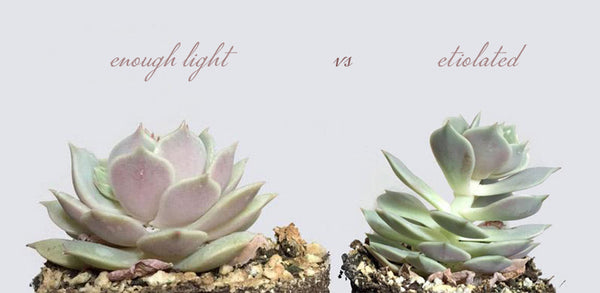"LOVEPLANTS" for 15% Off
How much sun exposure is enough for my succulents?
What impacts do different levels of sun exposure have on my plants?
What if where I live does not have a lot of sun?
If you’re wondering the same questions, you’re in the right place! This guide on sun exposure for succulents will give you all the answers you need to keep your plants happy all year round.
Succulent Collection |Click here to purchase
First of all, there are two important concepts you need to know before we start diving in.
Now that you’ve got these clear, we can figure out the right amount of sun exposure your succulents need.
While most succulents can tolerate full sun, some might get sunburnt under the highest temperatures of the afternoon or during the hottest months of summer. Therefore, we do not recommend exposing your succulents to direct full sun in temperatures above 90°F to avoid doing damage to them. Put them under filtered sunlight in the morning/evening only and give them full or partial shade in the afternoon.
<Photo Credit: Succulentexperiment.wordpress.com>
Succulents that are not used to direct sunlight, such as those that are newly planted and those that have been growing indoors or in a greenhouse, will need to be slowly introduced to more sunlight. Keep them in the shade first and gradually give them a slightly more amount of sunlight each day.
When your succulents are not getting enough sunlight, occurred most often when grown indoors, they will most likely get etiolated, which means the stems and leaves will stretch and get leggy. This happens because the plants are reaching upwards to find the sunlight they are lacking for photosynthesis.
Some succulents might change or lose the vibrant colors they used to have at the time of purchase. Some might slowly fade to green within a couple of months, especially when grown in the shade or in areas that aren't naturally well-lit. Succulents need bright sunlight all day or at least 6 hours a day to become “stressed” and display their bright colors.
<Photo Credit: mossymoss.com>
Your succulents do not like either overexposure or underexposure to sunlight. They prefer a moderate amount of sun exposure. It’s safe to give them from 6-8 hours of filtered sunlight everyday, except when the temperatures outside is too hot then full or partial shade is recommended.
If you live in areas where the weather is gloomy all year round or if your house doesn’t have awell-lit terrace or enough windows, you should consider limiting your purchases to only those succulents that remain green even when “stressed”. They have a higher chance of thriving and staying healthy even in low-light conditions. Plus, you won’t have to worry that they will lose their stunning colorful shades or compact shape. If you still love to add some colorful species to your collection, you should invest in some reliable grow lights. Fluorescent light bulbs that deliver the color temperatures from 5000K to 6500K can provide a light source that resembles natural daylight the most.



